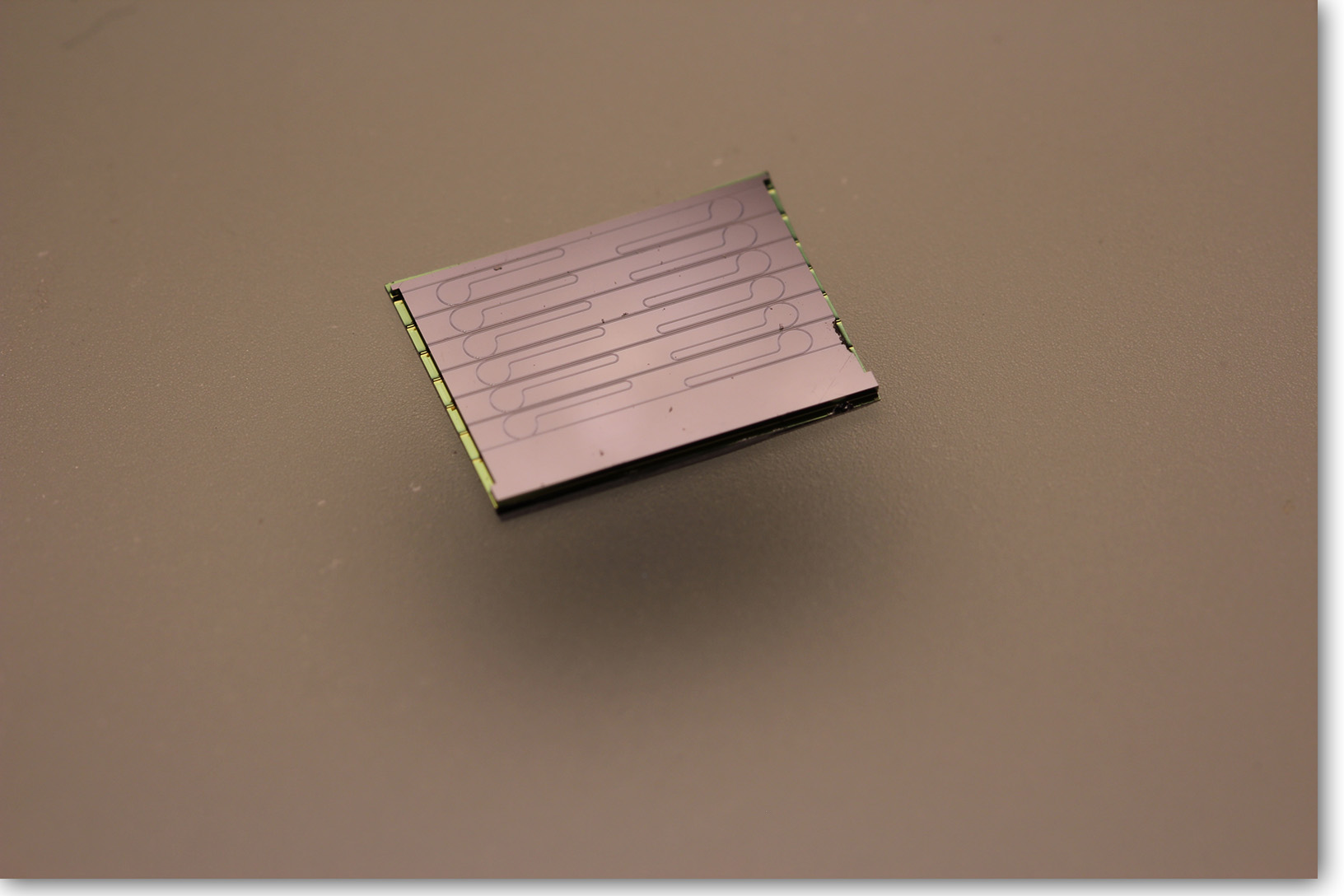Introduction
The increasing global data traffic creates a need for energy efficient transmission links that are envisioned to be based on optical interconnects. One approach to increase today’s data rates is highly parallel communication using many individually modulated channels in combination with advanced modulation formats that encode information onto the amplitude and the phase component of the optical carrier signal.
Such so called wavelength division multiplexing (WDM) telecommunication schemes require optical sources of equally spaced spectral components. The large achievable bandwidths, the small footprint and the intrinsically equal spectral spacing of the optical signal components make Kerr frequency combs generated with high Q silicon nitride chip resonators (see Figure 2) a promising component for chip-scale terabit/s transmitter (see Figure 1) [1].

Figure 1: Artist’s view of a chip-scale terabit/s transmitter.
Research
We fabricate the silicon nitride based resonator chips in our cleanroom facility at EPFL and the data transmission experiments are conducted by the group of Christian Koos at Karlsruhe Institute of Technology. So far QPSK and 16QAM have been demonstrated enabling 392 Gbit/s communication via one optical fiber [2,3].
The CMOS compatible fabrication of the SiN resonators in our cleanroom offers great freedom for the optical design. Currently the fabrication is focused on WDM compatible repetition rate resonators comprising an additional drop coupling waveguide, wide anomalous dispersion and high quality factors. Also the formation of optical solitons, as recently observed in crystalline resonators, on chip is currently investigated and of great interest for telecommunications as the resulting Kerr frequency comb has low amplitude and phase noise.

Figure 2: 25GHz silicon nitride resonators used in coherent data transmission experiments.
References
[1] Koos, C., Leuthold, J., Freude, W., Kippenberg, T. J., Pfeifle, J., Weimann, C., … & Schmogrow, R. (2013). Terabit/s data transmission using optical frequency combs. SPIE LASE (pp. 860009-860009). International Society for Optics and Photonics.
[2] Pfeifle, J., Lauermann, M., Wegner, D., Li, J., Hartinger, K., Brasch, V., … & Koos, C. (2013). Microresonator-Based Frequency Comb Generator as Optical Source for Coherent WDM Transmission. Optical Fiber Communication Conference. Optical Society of America. Retrieved from http://dx.doi.org/10.1364/OFC.2013.OW3C.2
[3] Pfeifle, J., Lauermann, M., Wegner, D., Brasch, V., Herr, T., Hartinger, K., … & Koos, C. (2013). Coherent data transmission with microresonator Kerr frequency combs. arXiv:1307.1037v2